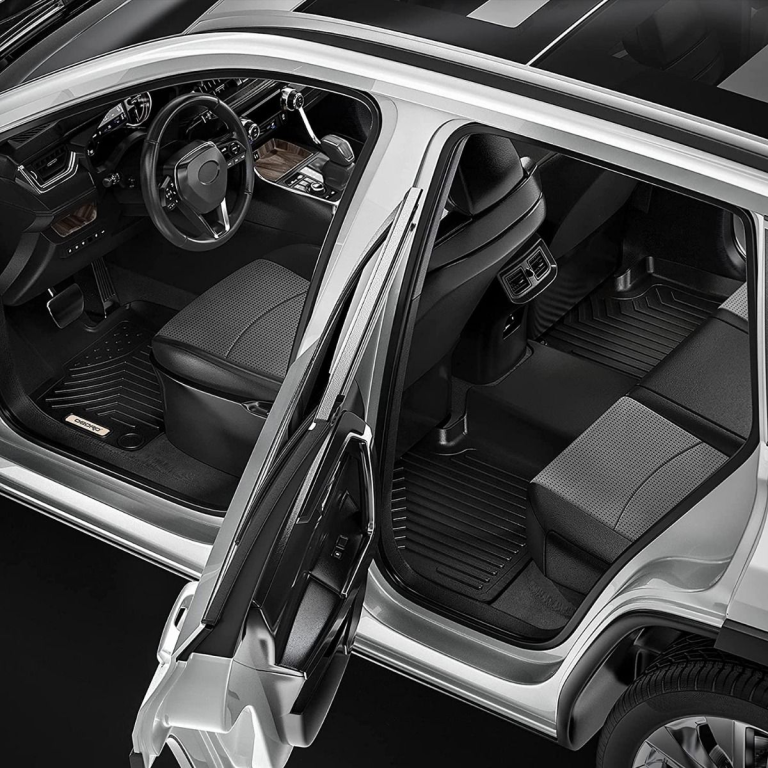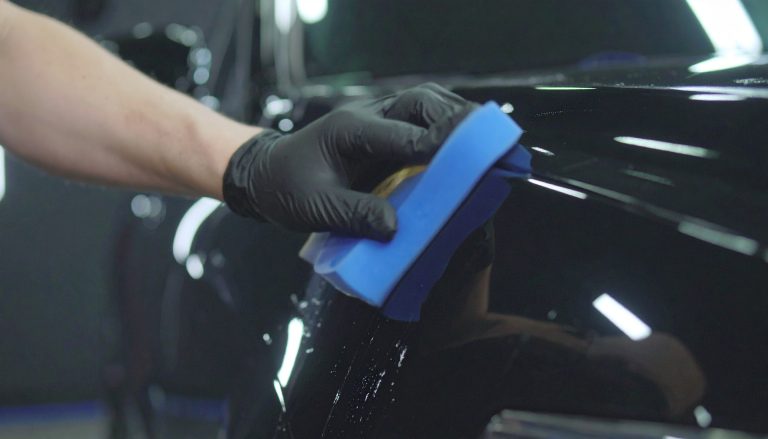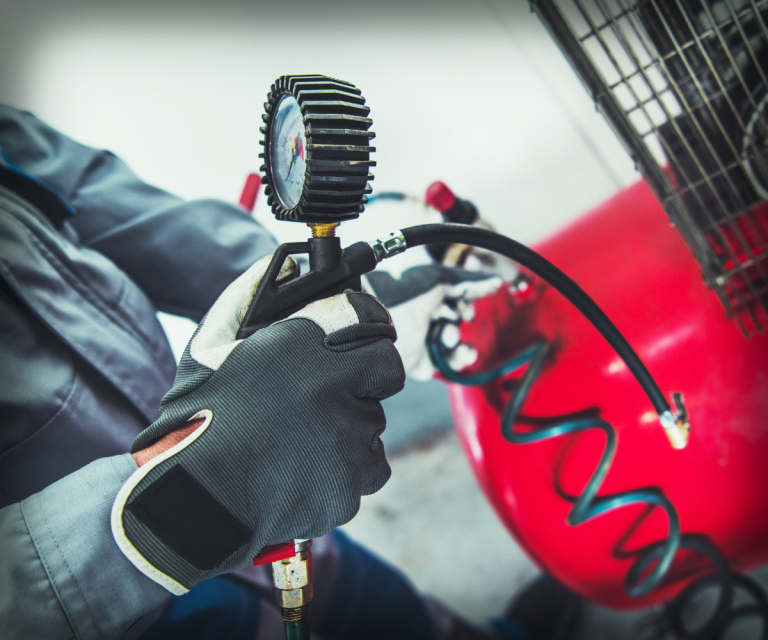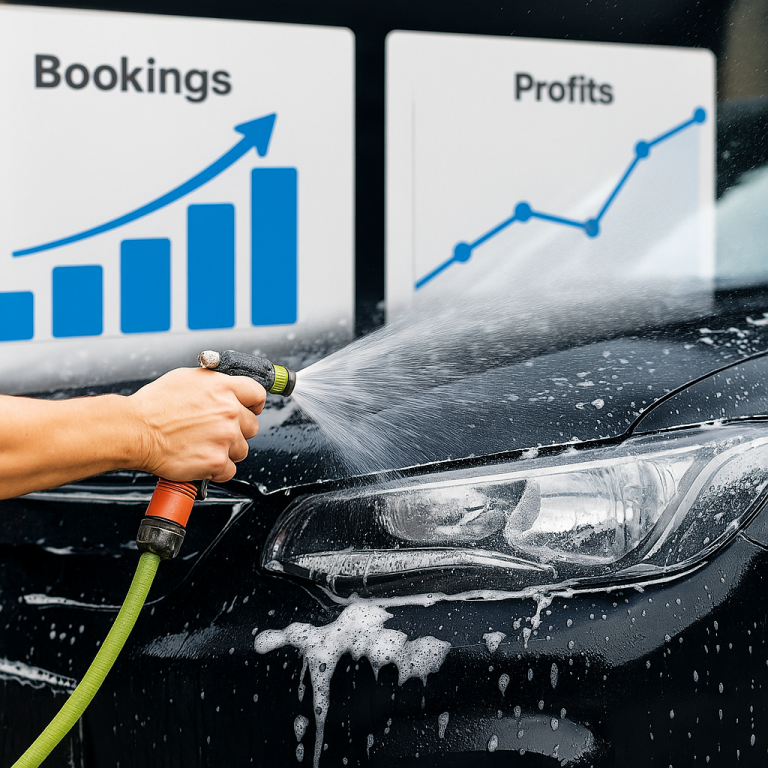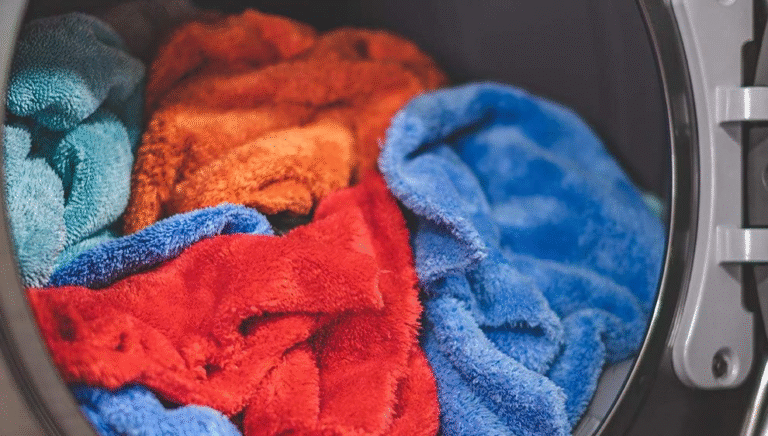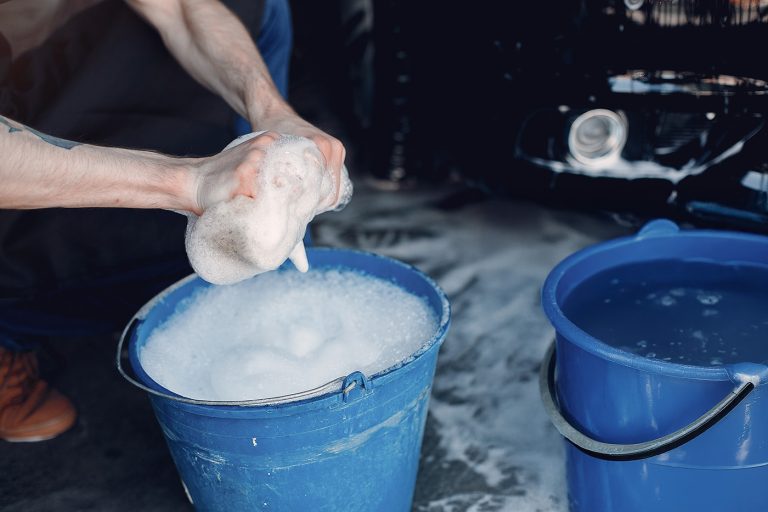PPF vs Ceramic Coating: Which One Should You Choose?
If you’ve been researching ways to protect your car’s finish, you’ve probably come across the two heavy hitters in paint protection: Paint Protection Film (PPF) and Ceramic Coating. Both options promise to keep your vehicle looking glossy and new, but they work very differently. Knowing the differences will help you choose the right protection for your car — or even combine them for the ultimate shield.
What is PPF?
Paint Protection Film (PPF) is a clear polyurethane film applied directly to your car’s painted surfaces. It’s thick, flexible, and impact-resistant.
Key benefits of PPF:
- Shields against rock chips, scratches, and swirl marks.
- Self-healing technology repairs light scratches with heat.
- Protects from bird droppings, bug splatter, and chemical etching.
- Available in clear, matte, or even colored finishes.
- Some films have hydrophobic properties but they are slight compared to what you get with a ceramic coating.
PPF is like an screen protector for your vehicle. It comes in rolls and shops use plotters to cut out the specific pieces according to your make and model.
It basically serves as an invisible armor. If you live where gravel roads, highway driving, or winter road salt are common, it’s an excellent investment.
PPF film is also used on airplanes, boats and countertops to deliver top-notch protection on many types of impact-prone objects.
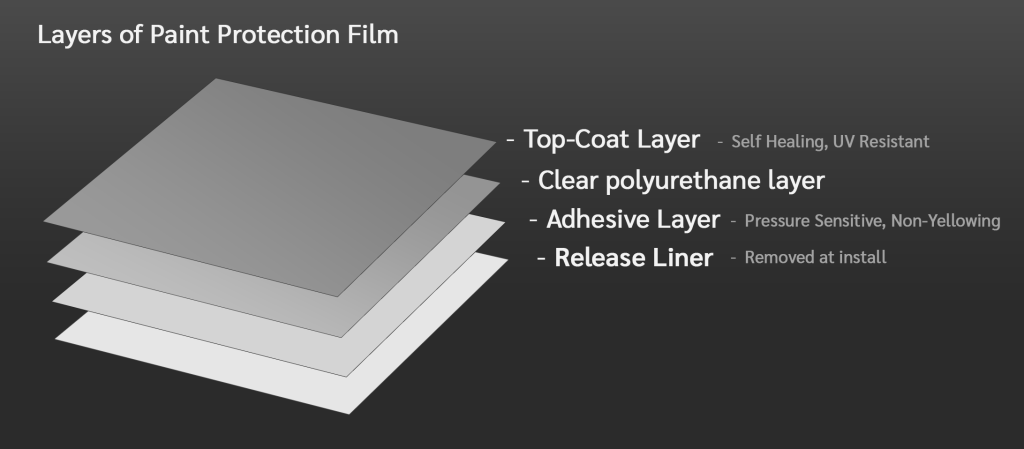
What is Ceramic Coating?
Ceramic Coating is a liquid polymer applied by hand that bonds chemically with your car’s paint. Once cured, it creates a hydrophobic surface that resists water, dirt, and UV rays.
It looks and feels almost like a layer of glass on your car. Any water that makes contact beads up instantly. It looks and fees really amazing.
Key benefits of ceramic coating:
- Makes your car easier to wash (dirt and water slide right off).
- Provides deep gloss and shine.
- Protects against UV damage, oxidation, and minor chemical stains.
- Lasts years when properly maintained.
Ceramic coating won’t stop rock chips or scratches like PPF, but it’s unmatched when it comes to keeping your car glossy and easy to clean.
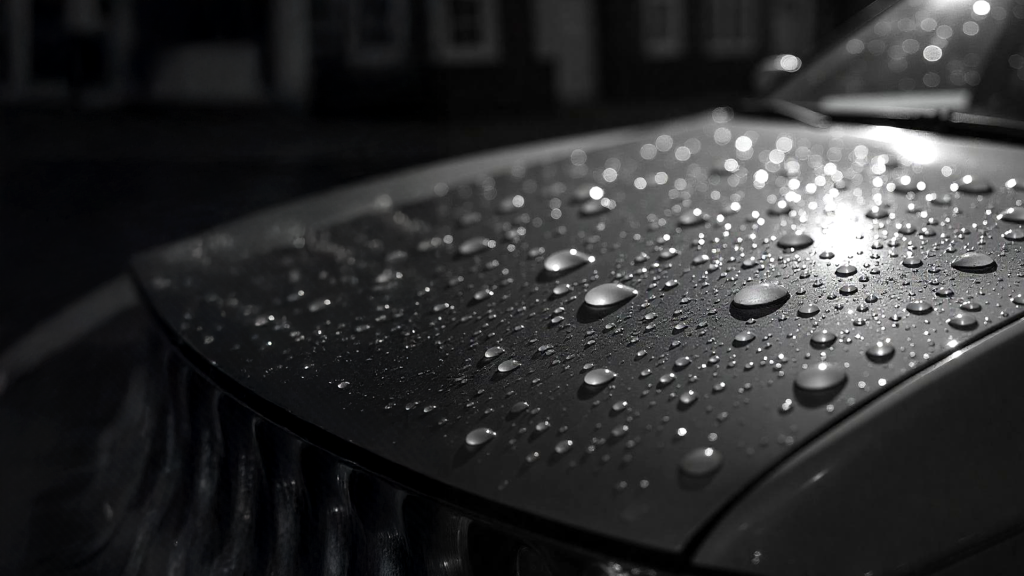
Recommended Product:
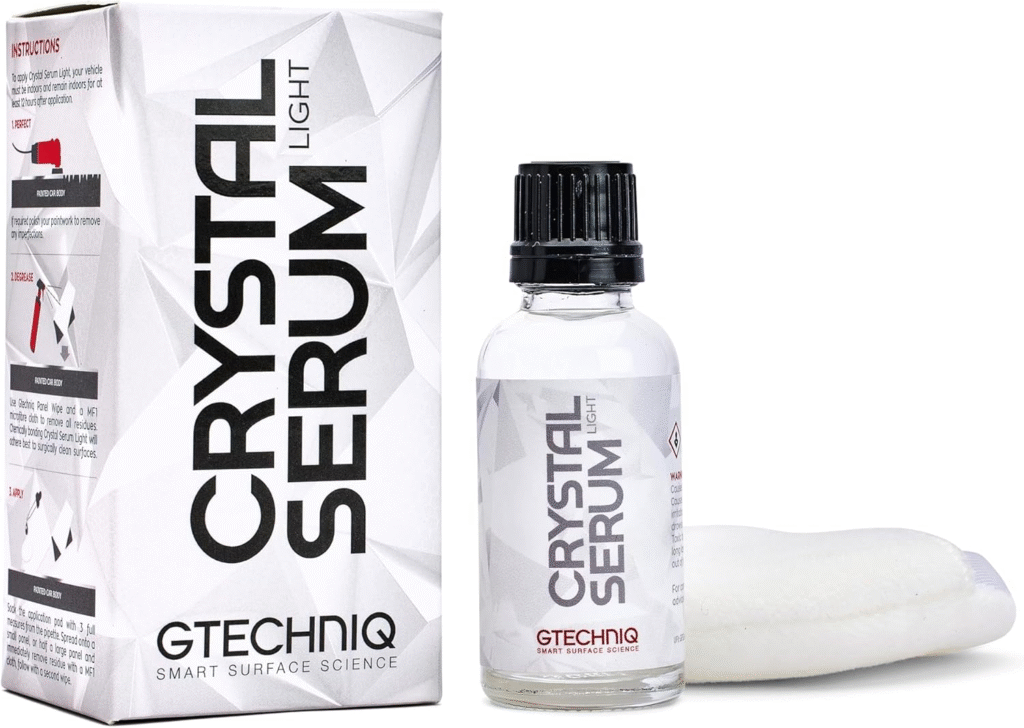
Gtechniq - Serum Light (CSL)
- One-part layering system (CSL base)
- Lasts 3–5 years
- Requires paint correction for best results
- Add Exo for an extremely glossy finish
When to Choose PPF Over Ceramic Coating
PPF is the better choice when:
- You do a lot of highway driving where rocks and debris can damage the paint.
- Your car is a daily driver in harsh conditions (gravel, snow, heavy rain, construction zones).
- You want the highest level of impact resistance against scratches and chips.
- You own a luxury or performance car and want to preserve the showroom finish for years.
- You plan to keep it longer than 3-5 years
If your main concern is physical damage from road hazards, PPF is the clear winner.
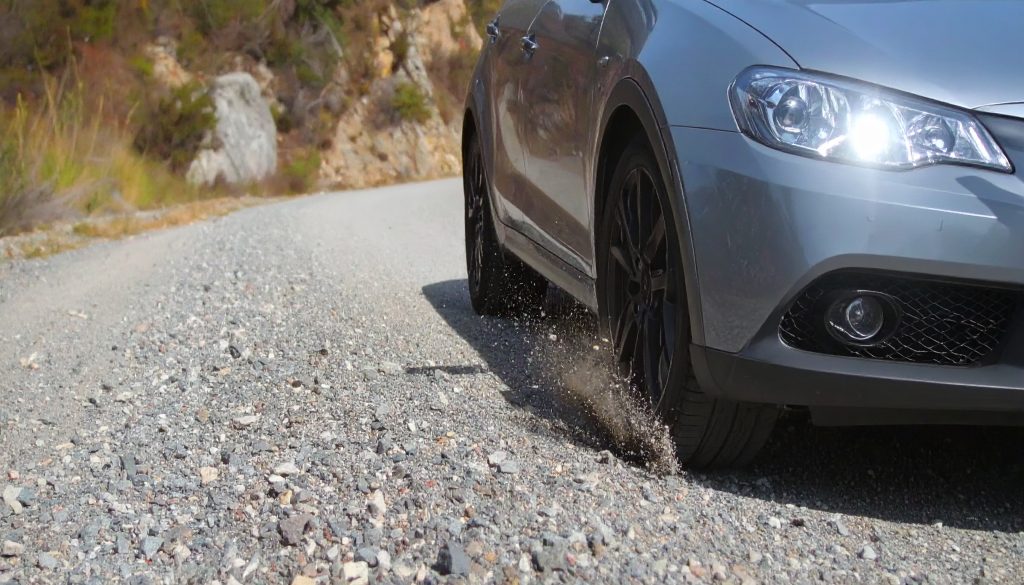
When to Choose Ceramic Coating Over PPF
Ceramic coating is the better choice when:
- You want your car to look shiny and glossy all the time.
- You’re mainly concerned about UV protection and fading.
- You’re looking for a way to make your car easier to clean and maintain.
- You want long-lasting protection without the higher cost of PPF.
If you don’t encounter a lot of rock chips but care about gloss and ease of maintenance, ceramic coating is ideal.
How PPF and Ceramic Coating Work Together
Here’s the good news: You don’t have to choose one or the other. In fact, PPF and ceramic coating complement each other perfectly.
- PPF provides the armor against rock chips, scratches, and physical damage.
- Ceramic coating provides the shield against UV rays, oxidation, water spots, and dirt buildup.
When the coating is applied on top of the PPF, you get the best of both worlds: long-term durability and showroom shine. Many detailers apply ceramic coating on top of PPF for enhanced hydrophobic properties and a deeper gloss.
Recommended Coating for PPF:

Gtechniq - Halo
- 49 Reviews / 4.5 Stars
- Safe for PPF and Vinyl
- Bonds to PPF for superior durability
Final Thoughts
When it comes to PPF vs ceramic coating, the right choice depends on your needs. If you’re battling rock chips and road debris, PPF is your go-to. If your goal is a glossy, low-maintenance finish, ceramic coating will make your life easier. And if you want maximum protection and aesthetics, combining both is the ultimate solution.
Also, check out our other articles with some questions to ask yourself if you are thinking about PPF.
PPF Vs. Ceramic Coating Comparison Table
This table is a quick reference to get a full picture.
| Feature | PPF | Ceramic Coating | Both |
|---|---|---|---|
| Protection Type | Barrier against impact damage | Shields against UV, oxidation, chemicals | Combines impact, chemical & UV protection |
| Durability | 5–10 years | 2–5 years | 10+ years |
| Self-Healing | Yes, topcoat heals w/ heat | No | Yes |
| Gloss & Shine | Satin or matte | High-gloss finish | Glossy ceramic + PPF protection |
| Hydrophobic Properties | Varies | Yes | Yes. Extra because both. |
| Cost | High (especially full-body wraps) | Moderate | Highest cost but best long-term |
| Best For | Highway drivers, luxury/performance cars | Daily drivers, gloss seekers | Max protection and value retention |
Still Unsure?
Here’s the last breakdown:
- Choose PPF if you drive a lot of highway miles, live in areas with gravel or road debris, or own a luxury/performance car you want to shield from rock chips and scratches or really want to get the most out of your vehicle when it's time to resell.
- Choose Ceramic Coating if your main goals are keeping the car shiny, easier to clean, and protection from UV rays, oxidation, water spots and organic chemicals.
- Choose Both if you want maximum protection and the best of both worlds: PPF for impact resistance and ceramic coating for unmatched gloss, hydrophobic properties, and easy maintenance.
Note: Even if you get full-car PPF coverage, it usually does not cover every part of the vehicle. The PPF + ceramic coating option is the ONLY way to get true FULL car protection.


